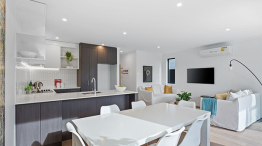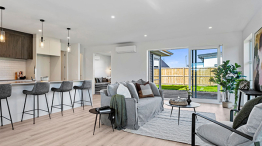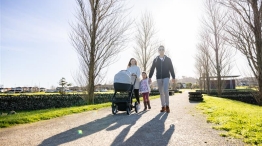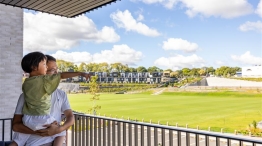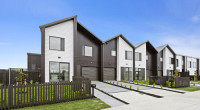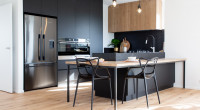LowCO – Our first low-carbon home pilot.
Get more Living in your inbox
Sign up to Living-news to receive our latest home listings, top tips and inspirational content
SubscribeCall us crazy, but we believe a low-carbon future is within reach for all Kiwi homes.
To show what’s possible, we’re building a new 3-bedroom detached home at Waiata Shores that could change the way New Zealand homes are constructed in the future.
This project, called the Low Carbon 1.5°C Homes Pilot (aka LowCO), is an ambitious initiative by Fletcher Living’s Sustainability team and has been designed to help New Zealand reach its climate change goals.
Steve Evans, Fletcher Living Chief Executive explains why it’s important for the building industry and New Zealand:
“As a country, we’re committed to playing our part in achieving the global goal of net-zero carbon emissions by 2050. New Zealand's home building sector faces a monumental shift in the way it designs, sources materials, and builds. Building a low carbon house that meets the 1.5 degree Celsius carbon budget is a move towards meeting our emission goals and we see it as an essential step for preparing our business for future climate challenges.”
The LowCO consultant team
To create LowCO, we assembled a team of industry experts who have the innovation and passion to go against regular housing expectations and strive for a more sustainable result. With concept design by Strachan Group Architects and detailed design by Tim Ross from Architype – a Dunedin-based high-performance, passive house architectural firm.
Jason Quinn’s expertise as an engineer from Sustainable Engineering was then brought in to assess the energy models and crunch the carbon numbers for the Life Cycle Assessment. Finally, Craig Pocock from Beca Wellington, reviewed the implications of landscaping performance – ensuring our on-lot design achieves low carbon, ecology, and biodiversity goals.
The team spent months working on carbon reduction pathways. Designing to eliminate carbon, selecting low carbon alternatives, and offsetting embodied carbon – which put simply is the carbon footprint of a building before it’s occupied.
Warmer, healthier, friendlier
The biggest contributor to a low carbon home is the operational carbon – how it is heated and cooled over its lifetime. With that in mind, our designers set about ensuring LowCO would be well-insulated and would incorporate an airtight thermal envelope. The team at Comfortech™ have helped us source a special wood fibre external insulation material will protect LowCO from cold, heat, noise, and moisture. The exterior and interior panels will be prefabricated at Fletcher Building’s Clever Core factory and will arrive pre-insulated, pre-glazed – ready to install at pace.
Of course, you still need fresh air, so LowCO will include a full mechanical ventilation heat recovery and exchange system throughout. Fresh air will be supplied to bedrooms and living areas, and stale air removed from the bathrooms and kitchen, for efficient whole-of-home heating and cooling.
Windows are often a weak point for any building as they literally puncture the thermal envelope. So our designs will include brand new thermally broken recessed windows which will sit back deeper in the window frame. They will have argon-filled double glazing and a special high-tech coating that lets light in and reflects heat.
While heat pumps for heating are pretty much the norm these days, our team looked to cut emissions even further by choosing heat pumps for water heating. These capture heat in the air and transfer it to the water – like a fridge in reverse.
Low carbon and sustainable options have been carefully selected for practically every feature included within LowCO. In the garage Firth’s low carbon concrete will be used.
The kitchen cabinetry has been chosen for its green credentials – considering volatile organic compounds (VOCs) and resins. The flooring will be engineered timber throughout – no synthetic ‘plastic’ carpet here and no old wool carpets going to landfill.
Nicola Tagiston, Head of Sustainability at Fletcher Living explains the thinking:
“Building a sustainable home means looking at it as a whole eco-system - everything is connected. The site, size and orientation of the home; the local climate for heating, cooling and moisture control; the air quality and all the appliances and electrical systems… the list goes on. How everything is made, where it’s made and how it’s transported to site affects carbon emissions.”
While LowCO, the Low Carbon 1.5°C pilot home at Waiata Shores is a work in progress, we are already taking the learnings from the design phase and applying these to three new low carbon terrace homes that will begin construction at Waiata Shores in 2023 and other future Fletcher Living projects.
Building sustainably to lower our carbon footprint will be a part of our business DNA and will ensure we strive to build homes that people and the planet love. LowCO is just the start of this crazy new journey.
We use cookies to ensure that we give you the best experience on our website. By continuing to use this website you are giving consent to cookies being used. View our privacy policy and terms of use for more details.

